General Dermatology
Agents known to induce BULLOUS PEMPHIGOID include gliptin antidiabetic drugs, PD-1/PD-L1 inhibitors, loop diuretics, thiazide diuretics, and NSAIDS. To this list we may now add ingestion of the herbal remedy Silybum marianum (milk thistle).
TO READ MORE: Gamissans M, et al. Bullous pemphigoid triggered by Silybum marianum: an unexpected side effect of an herbal remedy. Int J Dermatol. 2022;61(3):361-363. doi:10.1111/ijd.15822.

A small (N=21) retrospective study of CHRONIC SPONTANEOUS URTICARIA (CSU) patients compared to controls highlighted that CSU is associated with difficulty falling asleep, difficulty maintaining sleep, and poor subjective quality of sleep. CSU patients also demonstrated both subjective and objective evidence of sleep apnea.
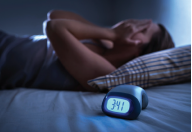
TO READ MORE: Ates H, et al. Relationships between quality of life, sleep problems, and sleep quality in patients with chronic idiopathic urticaria [published online ahead of print, 2022 Feb 14]. J Cosmet Dermatol. 2022;10.1111/jocd.14851. doi:10.1111/jocd.14851.
A retrospective review suggests an association between VITILIGO and celiac disease. Vitiligo patients who exhibit non-specific gastrointestinal complaints should be evaluated for celiac disease. A gluten-free diet may improve both conditions.
TO READ MORE: Zhang JZ, et al. Association between celiac disease and vitiligo: A review of the literature. World J Clin Cases. 2021;9(34):10430-10437. doi:10.12998/wjcc.v9.i34.10430.
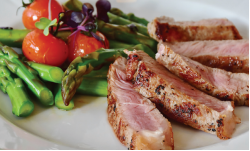
A case of otherwise refractory CHEILITIS GRANULOMATOSA (associated with ulcerative colitis) essentially resolved following certolizumab therapy (400mg every two weeks). Improvement was maintained when ustekinumab was substituted due to suboptimal inflammatory bowel disease control.
TO READ MORE: Karson D, et al. Successful treatment of cheilitis granulomatosa with certolizumab and ustekinumab. J Drugs Dermatol. 2022;21:317-318.
Despite some prior publications suggesting that dapsone might be useful in the management of GENERALIZED GRANULOMA ANNULARE, this small (N = 26) retrospective American study demonstrated that 25-200 mg dapsone daily (median daily dose 100 mg) led to improvement in only about 50% of subjects, and that improvement was inconsistently maintained.
TO READ MORE: Hrin ML, et al. Oral dapsone for the treatment of generalized granuloma annulare: A retrospective case series. J Am Acad Dermatol. 2022;86(4):911-914. doi:10.1016/j.jaad.2021.03.045.
An Italian case report highlighted KERATOLYSIS EXFOLIATIVA (KE) which followed initiation of a European anti-angina agent and resolved following drug withdrawal. The key points included the fact that KE is non-inflammatory and that it may be post-infectious or follow administration of cardiac drugs, notably diltiazem, amiodarone, and enalapril.
TO READ MORE: Pierobon E, et al. Keratolysis exfoliativa-like eruption induced by ranolazine. Dermatol Reports. 2022;14(1):9264. Published 2022 Mar 22. doi:10.4081/dr.2022.9264.
ACNE
A uniform method of assessing the severity of TRUNCAL ACNE has been validated and proposed. The “TRASS” (truncal acne severity scale) includes three subscales: clinical signs, quality of life, and family history.
TO READ MORE: Auffret N, et al. TRASS: a global approach to assess the severity of truncal acne [published online ahead of print, 2022 Feb 16]. J Eur Acad Dermatol Venereol. 2022;10.1111/jdv.18009. doi:10.1111/jdv.18009.
(Editor’s note: Time will tell if this scoring scale is widely adapted.)
ROSACEA
A retrospective Italian study of rosacea patients and six generations of their families disclosed a 69.2% FAMILIARITY RATE. This high rate suggests that it is worth notifying and possibly examining family members of index rosacea patients to facilitate early detection and therapy. Vertical transmission was more prevalent compared to horizontal transmission and maternal lineage more common than paternal lineage.
TO READ MORE: Dall’Oglio F, et al. Intrafamilial Transmission of Rosacea Spanning Six Generations: A Retrospective Observational Study. J Clin Aesthet Dermatol. 2022;15(2):35-39.
PEDIATRIC DERMATOLOGY

A detailed review of PSYCHODERMATOLOGIC DISORDERS among pediatric patients centered on dermatitis artefacta, body dysmorphic disorder (BDD), and delusions of parasitosis by proxy. Self-inflicted skin lesions occur primarily in adolescent females and often have their root in sexual abuse, underlying personality disorders, anxiety or depression, and emotional neglect. Because BDD is associated with suicidal ideation and attempted suicide, patients with this disorder should be referred for professional mental health counseling. Prevention of harm (such as bathing the child with pesticides) and treatment of the parent(s)–who typically also suffer from delusions of parasitosis–are key steps.
TO READ MORE: Mosca M, et al. A review of the diagnosis and management of pediatric psychodermatologic conditions: Part II. Pediatr Dermatol. 2022;39(1):12-16. doi:10.1111/pde.14885.
Regardless of stage, cutaneous SQUAMOUS CELL CARCINOMAS demonstrating lymphovascular invasion have a higher rate of recurrence, metastases, and disease-specific death according to a retrospective study jointly conducted at Harvard and Cleveland Clinic. Lymphovascular invasion correlates with a poorer ultimate outcome, independent of all other prognostic indicators.
TO READ MORE: Kus KJB, et al. Higher metastasis and death rates in cutaneous squamous cell carcinomas with lymphovascular invasion. J Am Acad Dermatol. 2022;86(4):766-773. doi:10.1016/j.jaad.2021.11.002.
PSORIASIS
For IXEKIZUMAB AND USTEKINUMAB, an early response is associated with a greater likelihood of sustained high degree of efficacy (PASI90, PASI100 by 80% of all visits through one year). Early response was defined as a PASI50 by week 2 or week 4 of therapy.
TO READ MORE: Augustin M, et al. Early Response is Associated With Stable Long-Term Response in Psoriasis Patients Receiving Ixekizumab or Ustekinumab. J Drugs Dermatol. 2022;21(2):122-126. doi:10.36849/jdd.6063.
Among INCIDENT PSORIASIS patients, 2.6% developed psoriatic arthritis during the following five years, according to the results of s retrospective German study. Increased risk of arthritis correlated with younger age at onset of psoriatic disease, as well as high levels of stress and depression.
TO READ MORE: Maximilian R, et al. Epidemiology, Comorbidity and Risk Factors for Psoriatic Arthritis: A Health Insurance Claims Database Analysis. Acta Derm Venereol. 2021;101(10):adv00566. Published 2021 Oct 11. doi:10.2340/00015555-3879.
A survey study involving patients from 36 treatment sites across Germany disclosed a high rate of ADDICTIVE BEHAVIOR among psoriasis patients. Just over 30% smoke daily, 8.6% reported alcohol addiction, 6% had a drug addiction, and 3.8% admitted to internet addiction.
TO READ MORE: Schielein MC, et al. Psoriasis and addiction: assessing mental health based on a cross-sectional study in Germany. Eur J Dermatol. 2021;31(6):722-729. doi:10.1684/ejd.2021.4146.
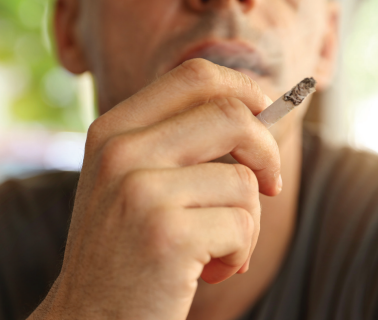
A prospective, open-label phase 4 study of patients receiving 15 mg weekly of METHOTREXATE for psoriatic arthritis attempted to answer the question of what to do next if improvement was not satisfactory. Three times as many patients achieved minimal disease activity when adalimumab was added (40 mg every other to every week) compared to those who underwent only methotrexate dose escalation (20-25 mg weekly).
TO READ MORE: Coates LC, et al. Comparison between adalimumab introduction and methotrexate dose escalation in patients with inadequately controlled psoriatic arthritis (CONTROL): a randomised, open-label, two-part, phase 4 study. Lancet Rheumatol. 2022 February 25. doi: 10.1016/S2665-9913(22)00008-X
Patients taking APREMILAST for psoriasis experience a CT scan-verified over 5% reduction in both subcutaneous and visceral fat deposition. Decreased adiposity was detectable after 16 weeks of therapy and persisted at a year of therapy. Reduction in this metabolically active fat may lead to reduced risk for or easier control of diabetes and cardiovascular disease, although this needs to be verified by appropriate long-term studies.
SOURCE: Gelfand J, et al. A phase IV, open-label study of the effects of apremilast on vascular inflammation and cardiometabolic function in psoriasis (The VIP-A trial). Presented at American Academy of Dermatology Annual Meeting; March 25-29, 2022; Boston.
CONTACT DERMATITIS
Based on available evidence, the authors do NOT recommend stopping dupilumab in order to perform PATCH TESTING. In fact, patients with atopic dermatitis who have residual disease despite dupilumab therapy might well be reacting to allergens which could reliably be disclosed by patch testing.
TO READ MORE: Kuzyk A, et al. Patch testing on dupilumab: Reliable or not? Cutis. 2022 March;109(3):158-159 | doi:10.12788/cutis.0471.
HAIR AND NAILS
A five-year retrospective American study indicated that Black patients with ALOPECIA AREATA (AA) were younger (76.3% diagnosed before age 40) and more likely female. Most interestingly, just over 44% of Black AA patients had one or more manifestations of the atopic diathesis.
TO READ MORE: Feaster B, et al. Epidemiology of alopecia areata in Black patients: A retrospective chart review [published online ahead of print, 2022 Jan 29]. J Am Acad Dermatol. 2022;S0190-9622(22)00163-3. doi:10.1016/j.jaad.2022.01.033.
PLATELET-RICH PLASMA proved effective at inducing partial hair regrowth in scarring alopecia associated with discoid lupus erythematosus.
TO READ MORE: Polster H, et al. Platelet Rich Plasma for the Treatment of Scarring Alopecia Due to Discoid Lupus Erythematosus. J Drugs Dermatol. 2022;21(3):309-310. doi:10.36849/JDD.5933.
A literature review summarized evidence that the two most popular NUTRACEUTICALS promoted for androgenetic alopecia, Nutrafol and Viviscal, are indeed capable of providing a modest increase in hair growth and modest decrease in hair shedding in both men and women.
TO READ MORE: Ring C, et al. Nutraceuticals for Androgenetic Alopecia. J Clin Aesthet Dermatol. 2022;15(3):26-29.
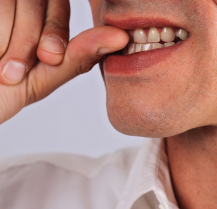
Twenty to 30% of the adult population is felt to suffer from ONYCHOPHAGIA (habitual nail biting). A single-center Korean retrospective analysis of 53 individuals with onychophagia revealed that only 38% bit all ten fingernails. The thumb was the most common nail affected. The most common clinical presentation was short nails with ragged distal borders. Hemorrhage and longitudinal melanonychia were both seen in about a third of patients. About half of the patients denied nail biting, despite clear cut evidence of it.
TO READ MORE: Shin JO, et al. Onychophagia: detailed clinical characteristics. Int J Dermatol. 2022;61(3):331-336. doi:10.1111/ijd.15861.
HIDRADENITIS SUPPURATIVA
A small (N=16) retrospective Irish study demonstrated that 75% of moderate to severe hidradenitis cases (Hurley stage II and III) initially experienced improved quality of life and reduced flare frequency following treatment with USTEKINUMAB. Ultimately, half of the patients discontinued therapy due largely to primary or secondary failure and suboptimal improvement. However, at 24 months, the other half of the patients were still being given ustekinumab.
TO READ MORE: Hollywood A, et al. Ustekinumab in the Management of Hidradenitis Suppurativa: A Retrospective Study. J Drugs Dermatol. 2022;21(3):319-320. doi:10.36849/JDD.6298.
Although the body of evidence addressing the use of BOTULINUM TOXIN in the management of hidradenitis suppurativa is quite limited, this systematic review points out that virtually all patients so treated experienced disease amelioration (from modest improvement to complete remission). Dosages used were wide-ranging: 50 to 250 units per axilla and 40 to 200 units per side of inguinal skin or upper thighs. The administration followed the grid pattern of injections utilized in treating hyperhidrosis.
TO READ MORE: Ravi M, et al. Botulinum Toxin in Hidradenitis Suppurativa: A Systematic Review. J Drugs Dermatol. 2022;21(4):408-412. doi:10.36849/JDD.5747.
CUTANEOUS ONCOLOGY, SURGERY AND LASERS
Several presented cases and a literature review point out that MERKEL CELL CARCINOMA can occur in extrafacial sites and can present with nonspecific clinical morphology. A nice diagnostic algorithm for MCC is shown.
TO READ MORE: Ranpariya V, et al. Extrafacial Merkel Cell Carcinoma Presenting as a Cyst. J Drugs Dermatol. 2022;21(3):304-308. doi:10.36849/JDD.6248.
RP1 is a genetically modified oncolytic version of HSV-1 that selectively infects and kills neoplastic cells. The concurrent administration of RP1 WITH NIVOLUMAB results in extraordinary therapeutic benefits. A Phase 2 study showed an objective response rate of 60% in advanced cutaneous squamous cell carcinoma (complete response rate 46.6%).

Adverse events were relatively common, most often consisting of fever (33.3%), chills (30.4%), fatigue (29%), itching (26.1%), influenza-like symptoms (24.6%), and nausea (21.7%). Further research is certainly warranted.
TO READ MORE: Niu J, et al. Safety and efficacy of RP1 + nivolumab in patients with non-melanoma skin cancer of the head and neck: results from IGNYTE phase 1/2 multi-cohort clinical trial. Presented at: 2022 Multidisciplinary Head and Neck Cancers Symposium; February 24-26, 2022; Phoenix, Arizona. Accessed February 25, 2022. https://bit.ly/3shikch
A single-center Mexican retrospective review of 102 cases of LYMPHOCYTOMA CUTIS revealed that 70% were female and the median age was 45 years old. Over a median follow-up time of 12 years, none evolved into frank lymphoma. Solitary lymphocytoma was more common than disseminated lymphocytoma, and the face was the most common site in both types. Surgical excision and corticosteroids were the most common treatments.
TO READ MORE: Villalobos-Ayala RA, et al. Lymphocytoma cutis (cutaneous B-cell pseudolymphoma): study of 102 cases with emphasis on the histological characteristics and immunohistochemistry of the miliarial type. Int J Dermatol. 2022;61(3):316-323. doi:10.1111/ijd.15909.
DRUGS AND DEVICES
A nicely illustrated small case series demonstrated the efficacy of oral tranexamic acid for MELASMA. The dose utilized was 325mg twice daily, eventually tapered to maintenance with 325mg daily. Tranexamic acid decreases melanogenesis indirectly by blocking plasminogen conversion to plasmin.
TO READ MORE: Foss M, et al. Oral Tranexamic Acid for the Treatment of Melasma: A Case Series and Novel Dosing Regimen. J Drugs Dermatol. 2022;21(4):393-398. doi:10.36849/JDD.663.
(Editor’s note: Use of this agent for melisma is clearly off-label, although potential reported side effects are uncommon and mild.)
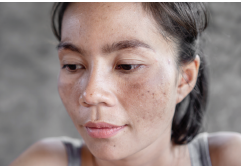
Votucalis is a chemical derived from tick saliva which is secreted into the insect’s host to prevent sensations of ITCH AND PAIN. Thus, the tick can continue to feed undisturbed. This agent has now been shown in animal experiments to block expected responses to itchy and painful stimuli. Votucalis is thus being developed as a human itch suppressant and non-opioid pain modulator.

TO READ MORE: Alrashdi I, et al. Votucalis, a Novel Centrally Sparing Histamine-Binding Protein, Attenuates Histaminergic Itch and Neuropathic Pain in Mice. Front Pharmacol. 2022;13:846683. Published 2022 Mar 8. doi:10.3389/fphar.2022.846683.
INFECTIOUS DISEASES
A large-scale (N=14,000) retrospective American study compared middle-aged nurses who did and who did not take ANTIBIOTICS for at least two months out of four years. Those who did take antibiotics had lower neuropsychological test scores involving memory, learning capacity, attention, and psychomotor speed. The investigators suggest that this negative effect on cognition may be due to antibiotic-induced gut dysbiosis.
TO READ MORE: Mehta RS, et al. Association of midlife antibiotic use with subsequent cognitive function in women. PLoS One. 2022;17(3):e0264649. Published 2022 Mar 23. doi:10.1371/journal.pone.0264649.
(Editor’s note: Makes one wonder what are we doing to our adult acne and rosacea patients by administering months of continuous antibiotic therapy?)
RHEUMATOLOGIC DISEASES
Five patients with TREATMENT RESISTANT MORPHEA were successfully managed with apremilast. Existing patches and plaques of morphea decreased in size, erythema, firmness, and surface vasodilatation. There was a notable cessation of new lesion formation, as well.
TO READ MORE: Koschitzky M, et al. Apremilast as a treatment for morphea: A case series. JAAD Case Rep. 2021;19:58-63. Published 2021 Nov 25. doi:10.1016/j.jdcr.2021.11.009.
COVID-19
Researchers have found that the COVID-19 pandemic has resulted in a sustained decrease in the number of NEWLY DIAGNOSED CANCERS. One of the cancers with the greatest decline in incidence during the pandemic is malignant melanoma. These findings suggest the need for additional public education to reinforce that the benefits of early melanoma detection and treatment far outweigh any risk posed by COVID-19 by the health care environment.
TO READ MORE: Eskander A, et al. Incident Cancer Detection During the COVID-19 Pandemic [published online ahead of print, 2022 Feb 1]. J Natl Compr Canc Netw. 2022;1-9. doi:10.6004/jnccn.2021.7114.
A fascinating case report of a 37-year-old suffering from WISKOTT-ALDRICH SYNDROME who developed protracted symptomatic and seropositive COVID-19 infection for over 200 days. Following two administrations of standard Pfizer vaccine, the patient finally demonstrated enhanced immune response to the virus, and symptomatic disease resolution.
TO READ MORE: Bradley RE, et al. Persistent COVID-19 Infection in Wiskott-Aldrich Syndrome Cleared Following Therapeutic Vaccination: a Case Report. J Clin Immunol. 2022;42(1):32-35. doi:10.1007/s10875-021-01158-5.
(Editor’s Comment: We have plenty of vaccines available. Perhaps 1 to 2 doses should be properly prospectively tested in incident infections as an adjunct therapy?)
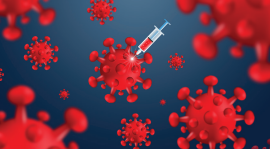
An overview of epidemiological studies seems to indicate that a SARS-CoV-2 infection results in about a year duration REDUCED RISK OF REINFECTION. Moreover, reinfection is less likely to lead to hospitalization and/or death compared to a primary infection. Although data are not entirely consistent, it appears that infection leads to protection equal to or slightly greater than two mRNA vaccine injections.
TO READ MORE: Pilz S, et al. SARS-CoV-2 reinfections: Overview of efficacy and duration of natural and hybrid immunity. Environ Res. 2022;209:112911. doi:10.1016/j.envres.2022.112911.
An observational cohort study involving 112,269 individuals disclosed that administration of ASPIRIN during the first day of hospitalization reduced the 28-day mortality rate among those with moderate COVID-19. This finding supports previous work which showed that early aspirin administration reduced the mortality rate among hospitalized individuals who were at high risk of death due to severe disease or comorbid states (such as diabetes). Studies of aspirin use with COVID-19 have not shown an increase in hemorrhagic events. The best response to early aspirin therapy is seen in those over age 60 and/or those with one or more comorbidities.
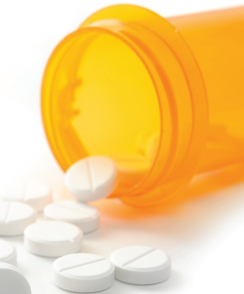
TO READ MORE: Chow JH, et al. Association of Early Aspirin Use With In-Hospital Mortality in Patients With Moderate COVID-19. JAMA Netw Open. 2022;5(3):e223890. Published 2022 Mar 1. doi:10.1001/jamanetworkopen.2022.3890.
(Editor’s comment: Aspirin might prove to be a cheap, simple, readily available method of blunting the harmful inflammatory storm associated with COViD-19 infection.)

